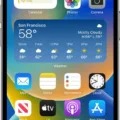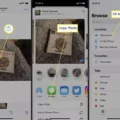Link sharing apps are a popular way to securely share large files with others. These apps allow you to send files that are too big to be sent as email attachments, making it easier to share important documents, videos, or photos with friends, colleagues, or clients.
So, what exactly is a link sharing app? Well, it’s a tool that allows you to generate a unique URL link for a specific file or group of files. You can then send this link to the intended recipient, who can access and download the files by simply clicking on the link.
One of the advantages of using a link sharing app is that it eliminates the need for both the sender and recipient to have the same file-sharing software or application installed on their devices. The files are hosted on the cloud, and the link provides a direct and convenient way to access them.
Link sharing apps also offer additional features to enhance the sharing experience. For example, some apps allow you to set passwords or expiration dates for the links to ensure that only authorized users can access the files and that the links expire after a certain period of time.
Security is a major concern when it comes to sharing sensitive or confidential files. To address this, many link sharing apps provide robust security measures to protect your data from unauthorized access or theft. Some apps offer end-to-end encryption (E2EE), which means that your files are encrypted before they leave your device and can only be decrypted by the recipient with the appropriate key.
While link sharing apps are convenient and secure, they do have some limitations. For instance, the recipient needs to download the files quickly as the links typically expire after a few days. Additionally, not all link sharing apps offer the same level of security or features, so it’s important to choose one that meets your specific needs.
Link sharing apps are a valuable tool for securely sharing large files. They eliminate the need for both sender and recipient to have the same file-sharing software and provide a convenient way to access files through a unique URL link. With robust security measures in place, these apps ensure that your files are protected from unauthorized access. However, it’s important to consider the limitations and choose a link sharing app that suits your requirements.
What Is Link Sharing App And Do I Need It?
A link sharing app is a tool that allows you to share links or files with others through various means, such as text messaging, email, or social media platforms. It simplifies the process of sharing files or information that may be too large to send via traditional methods.
The main purpose of a link sharing app is to enable users to quickly and easily share files or links with others, regardless of the file size. This can be especially useful when you need to send large files, such as high-resolution images, videos, or documents, that exceed the limitations of standard messaging or email apps.
By using a link sharing app, you can generate a unique link or QR code for the file you want to share. You can then send this link to the intended recipient, who can access and download the file directly from the link. This eliminates the need for file compression or splitting, making the sharing process more efficient and convenient.
Furthermore, link sharing apps often provide additional features such as password protection, expiration dates, and access controls. These features allow you to have more control over who can access your shared files and for how long. This can be particularly beneficial when sharing sensitive or confidential information, ensuring only authorized individuals can access the files.
Whether or not you need a link sharing app depends on your specific needs and preferences. If you frequently need to share large files or want more control over your shared content, a link sharing app can be a valuable tool. However, if you rarely encounter file size limitations or have no specific requirements for sharing files, you may not find it necessary.
A link sharing app is a useful tool for sharing large files or links with others. It simplifies the sharing process and provides additional features for enhanced control and security. Consider your specific needs and preferences to determine if a link sharing app is right for you.

Is Link Sharing Safe?
Link sharing can be safe as long as you take certain precautions and use secure platforms. Here are some factors to consider:
1. Platform security: Choose a reputable link-sharing service that prioritizes security. Look for providers that use encryption protocols and have a track record of keeping user data secure.
2. End-to-end encryption (E2EE): This is a critical security feature to look for in a link-sharing service. E2EE ensures that your files and data are encrypted on your device, sent securely to the cloud, and remain encrypted until accessed by the recipient. This means that even if a hacker intercepts the data during transmission or gains access to the cloud storage, they won’t be able to decipher the contents.
3. Access controls: Opt for a platform that allows you to set access controls for your shared links. This ensures that only intended recipients can access the shared content. Look for features like password protection, expiration dates, and permissions to limit who can view, edit, or download the shared files.
4. Two-factor authentication (2FA): Enable 2FA whenever possible to add an extra layer of security. This requires users to provide a second form of authentication, such as a unique code sent to their mobile device, in addition to their password.
5. Regular updates and patches: Choose a service that regularly updates its software and applies security patches to address any vulnerabilities. This helps protect against known security risks and ensures that your data remains secure.
6. User awareness and education: Educate yourself and your team about the risks associated with link sharing, such as phishing attacks or malware-infected links. Be cautious when clicking on shared links, especially if they come from unknown or suspicious sources.
Remember, no system is completely foolproof, so it’s important to stay vigilant and follow best practices to ensure the safety of your shared links and data.
What Is The Purpose Of A Sharing Link?
The purpose of a sharing link is to securely send a digital file to another person. This method is commonly used when the file is too large to be sent as an email attachment. Instead of attaching the file to an email, the sender generates a secure URL link that can be shared with the recipient. The recipient can then access and download the file by clicking on the link.
Link sharing offers several advantages. Firstly, it allows for the transmission of large files that may exceed the size limits imposed by email providers. This is particularly useful for sharing high-resolution images, videos, or large documents. Secondly, link sharing ensures the security of the file being shared. By using a secure URL, the sender can control who has access to the file and prevent unauthorized individuals from downloading or viewing it.
In addition, link sharing eliminates the need for recipients to have specific software or applications installed on their devices to open the file. They can simply click on the link and access the file through their web browser. This makes the process more convenient and user-friendly.
Furthermore, link sharing enables the sender to track the activity related to the shared file. They can monitor who has accessed the file, when it was accessed, and how many times it was downloaded. This can be helpful for tracking the progress of a project, ensuring timely delivery of files, or monitoring the distribution of sensitive information.
To summarize, the purpose of a sharing link is to securely and conveniently send large digital files to recipients, bypassing email attachment limitations. It provides a reliable method for file transmission, ensures data security, and allows for activity tracking related to the shared file.
Why Is Link Sharing On My Phone?
Link sharing on your phone is a convenient way to send multiple heavy files to others. It allows you to bypass limitations on file sizes or email attachments, making it easier to share large files such as high-resolution photos, videos, or documents. Instead of sending these files directly to the recipient, which may not be feasible due to size restrictions, you can upload them to a cloud storage service or file sharing platform and generate a shareable link.
By sharing a link, you provide the recipient with access to download the files at their convenience. This eliminates the need for them to have specific software or accounts to receive the files directly. They can simply click on the link and download the files to their own device.
Link sharing on your phone is especially useful when you are on the go and don’t have access to a computer. It allows you to quickly share files with others, even while you are away from your desk. Whether you are collaborating on a project, sharing media files with friends or family, or sending important documents, link sharing simplifies the process.
However, it is important to note that link sharing on your phone may have some limitations. These links typically have an expiration date, usually a few days, after which they become inactive. This means that the recipient needs to download the files within the specified time frame. Additionally, the availability and speed of internet connection on your phone can affect the efficiency of uploading and sharing large files.
To summarize, link sharing on your phone is a practical solution for sending multiple heavy files. It allows you to bypass limitations, share files conveniently, and collaborate on the go. Keep in mind the expiration date of the links and the quality of your internet connection to ensure smooth and timely file sharing.
Conclusion
Link sharing apps offer a convenient way to securely send large files to others. They provide a simple URL link that allows the recipient to download the files without the need for email attachments or physical storage devices. This is especially useful when dealing with heavy files that exceed the limitations of email attachments.
However, there are some limitations to consider. Link sharing typically requires the recipient to download the files quickly, as the links often expire after a few days. This may not be ideal for situations where the recipient needs more time to access the files. Additionally, link sharing is not a universal feature and may not work seamlessly for all users or with all devices.
When choosing a link sharing app, it is important to prioritize security. Look for providers that offer robust security measures, such as end-to-end encryption, to protect your files and data from unauthorized access or theft. This ensures that your sensitive information remains confidential throughout the sharing process.
Link sharing apps can be a valuable tool for sending large files securely and bypassing email attachment limitations. By considering the limitations and prioritizing security, you can make the most out of link sharing and ensure that your files are safely transmitted to their intended recipients.







